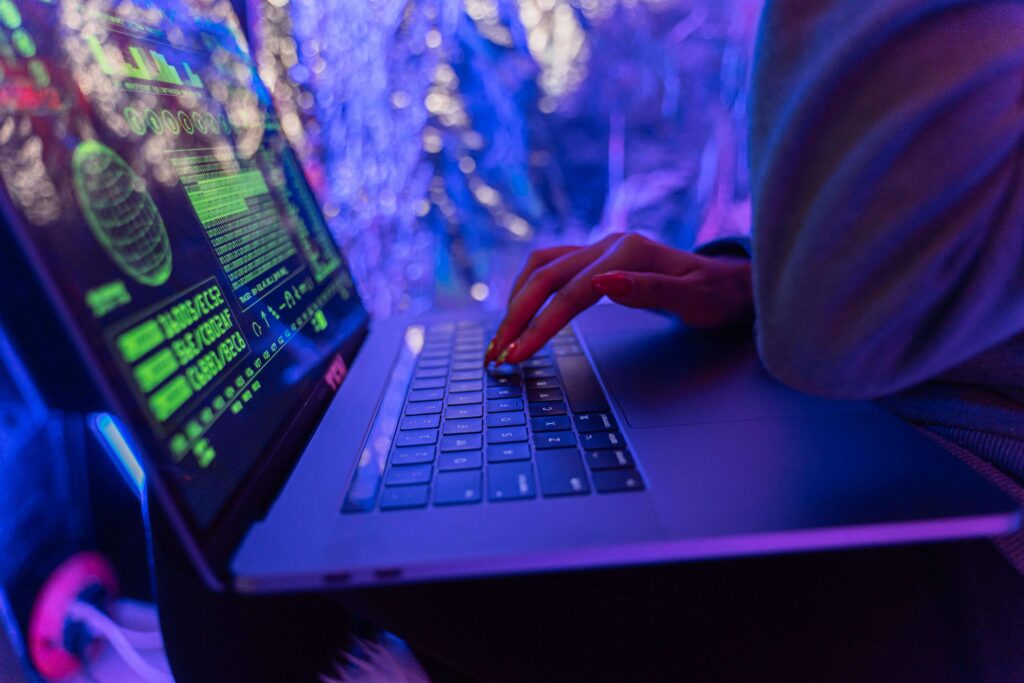Have you notice why your spam folder catches certain emails but not others? Or why some online logins send you a warning that “someone may be trying to access your account from an unusual location”? It’s not magic. It’s not even some guy behind a desk monitoring millions of screens. It’s AI. And it’s working around the clock.
That’s the thing about modern cybersecurity. It’s not just about firewalls and antivirus software anymore. It’s about pattern recognition, real-time decision-making, and machine learning algorithms that never sleep. In other words, it’s about AI in Cybersecurity.
The Digital Wild West
Back in the day, cybersecurity was like installing locks on doors. You set rules: block this port, flag that file. But hackers got smarter. They stopped knocking on the front door and started crawling in through vents, digging under floors, or better yet—tricking you into handing them the keys.
Phishing, ransomware, zero-day attacks, insider threats—today’s threat landscape is more “Mission Impossible” than “Norton Antivirus.” And it’s changing faster than any human team could possibly keep up with. That’s where AI in Cybersecurity steps in.
What Even IS AI in Cybersecurity?
Let’s back up for a second. Artificial Intelligence, in this context, means systems that learn from patterns in huge data sets and make decisions based on that learning. In cybersecurity, that means detecting anomalies in network traffic, identifying potential threats, and even responding to attacks—all without human input.
It’s kind of like having a hyper-vigilant security guard who reads every email, monitors every login attempt, and checks every bit of traffic moving through your network—then cross-references it against everything it has ever seen to decide whether it’s safe.
Companies like Darktrace and CrowdStrike are already doing this. They use AI to analyze millions of signals across endpoints, cloud environments, and networks, and act on them within milliseconds.
Think of It Like Grocery Shelves
Weird comparison, but stay with me. You know how store brands are always on the bottom shelf? That’s not an accident—it’s the result of business strategy, consumer psychology, and statistical modeling.
Cybersecurity has its own version of shelf placement. The “top shelf” attacks are the obvious ones—scams you can spot a mile away. But the really dangerous stuff? That’s hiding at ankle level, where no one’s looking. AI shifts your eyes down to those bottom shelves. It sees what humans miss.
The Role of Machine Learning
Machine learning is a big part of the {seo_keyword} equation. It’s not just feeding AI a set of rules—it’s teaching it to learn from experience.
Take anomaly detection. A human might not notice a login at 3 a.m. from another country. But if AI knows you always log in between 9 and 5 from Boston, it’ll flag anything outside that norm. And not just flag it—possibly freeze access or alert security automatically.
It’s also being used to identify malware before it activates. Tools like Cylance use machine learning to analyze code behavior and block threats even if they’ve never seen that specific file before.
Real-Time Defense
One of AI’s biggest strengths in cybersecurity? Speed.
The time between an attacker breaching a system and exfiltrating data can be minutes. Humans don’t move that fast. AI does. It can scan gigabytes of traffic in seconds, respond to a DDoS attack mid-stream, or isolate an infected device before malware spreads.
Companies are implementing AI-powered Security Information and Event Management (SIEM) platforms like IBM QRadar or Splunk to monitor, detect, and respond to threats across massive networks in real time.
But… It’s Not Perfect
Like anything, AI in Cybersecurity has its limitations. False positives are a problem. So is bias—if the training data is flawed, the decisions AI makes will be too. And there’s always the uncomfortable question: what happens if attackers start using AI, too?
Spoiler alert: they already are.
There’s AI-generated phishing, deepfake audio impersonations of executives, and automated tools that test thousands of password combinations in minutes. It’s a full-blown arms race, and both sides are programming smarter weapons every day.
Why It Matters for Everyone
You don’t need to run a Fortune 500 company for this to matter. If you’ve ever entered a password, shopped online, or stored files in the cloud—you’re part of the battlefield.
And if AI is now the default bouncer at the door of your digital life, it’s worth understanding what it’s doing. Because the threats are invisible. The attacks are automated. And the defenses? They’re learning as they go.
We often think of cybersecurity as some invisible background process—like plumbing. You don’t care how it works, as long as it does. But AI is changing that equation. It’s no longer about reacting to threats. It’s about predicting and preventing them before they happen.
And while the idea of machines protecting us from other machines might feel like the opening scene of a dystopian movie, for now, it’s the best shot we’ve got at keeping the internet safe.
So next time you get a warning that “this login seems unusual,” thank your invisible, tireless AI defender.


